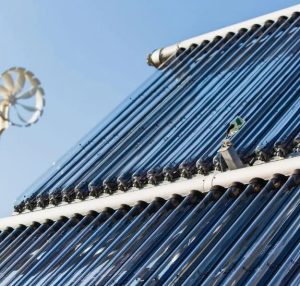Expanding Your Solar System: How To Add More Panels
Boosting the capacity of your solar system by adding more panels is an excellent way to increase your home's energy efficiency, lower electricity costs, and elevate your environmental stewardship. Whether your energy demands have grown or you're simply aiming to harness more solar power, expanding your setup can be a smart move. This guide outlines the crucial steps and considerations for seamlessly integrating new panels into your existing solar system.

Evaluate Your System's Current Capacity
First off, take a close look at your existing setup, particularly the inverter. It's the heart of your solar system, converting the DC electricity generated by your panels into AC power for your home. Most residential inverters are sized to handle specific loads, ranging typically from 3,000 to 7,000 watts. If your current energy production is near the inverter’s limit, you might need an upgrade or an additional inverter to accommodate more panels.
Check Your Roof’s Availability
Real estate on your roof will dictate how many more panels you can install. Given that a standard solar panel occupies about 17.5 square feet and outputs between 250 to 400 watts, calculate the available space to determine the number of panels you can add. Orientation and shading are crucial; optimal solar energy production usually requires a south-facing installation with minimal shade.
Local Regulations and Grid Connection Rules
Local building codes and the policies of your utility provider can significantly influence your expansion plans. Some areas limit the size of residential solar systems, while utilities may have specific requirements for connecting additional panels to the grid. Ensuring compliance with these regulations and securing any necessary permits is essential to avoid legal and logistical headaches down the line.
Selecting the Right Panels
For the best results, new panels should be compatible with your existing array. While matching the new units to your old ones in brand, model, and output is ideal, it’s not always feasible due to product discontinuations or technological advancements. Strive for panels that match as closely as possible in efficiency and size to maintain system balance and performance.
Deciding Between DIY and Professional Installation
Adding solar panels involves complex electrical work and potential structural modifications to your roof. If you have a background in electrical systems and are confident in your DIY skills, you might consider a self-installation. However, for most homeowners, hiring a professional installer is the safest and most efficient route. They can handle everything from design and permitting to installation and testing, ensuring your system expansion goes smoothly.
How to Add More Solar Panels to Existing System: A Strategic Upgrade
Expanding your solar panel array is not just about plugging in more panels; it’s about strategically enhancing your home's energy generation capacity. This upgrade requires a careful assessment of your current system, understanding local regulations, choosing compatible technology, and deciding on the best approach to installation. With the right planning and execution, you can significantly boost your solar power production, making your home greener and more energy-independent.
Embracing the expansion of your solar system reflects a commitment to sustainable living and energy efficiency. As solar technology continues to advance, opportunities for homeowners to improve their systems and increase their reliance on renewable energy will only grow, making solar expansions a wise choice for the environmentally conscious household.